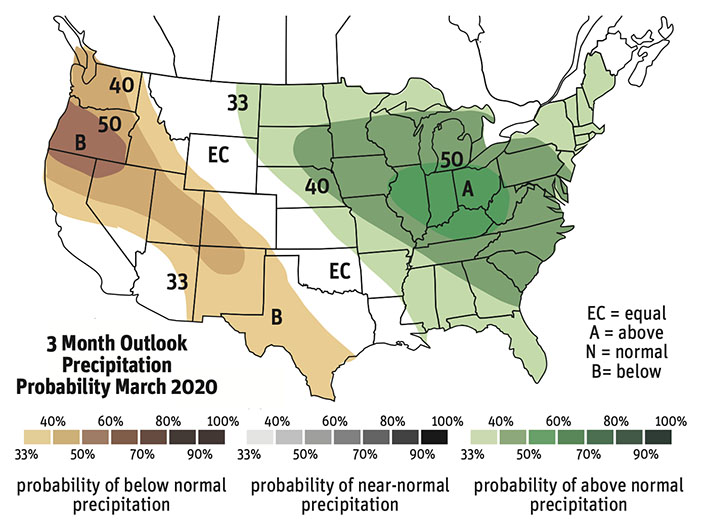Analysts skeptical about projected increase in corn acres because of extremely wet conditions in prime growing areas
American farmers will plant more corn and soybeans and less wheat in 2020, according to Allendale Inc.
The Chicago agricultural commodity brokerage and analysis firm surveyed U.S. growers from March 1-13.
The results show producers intend to plant 94.63 million acres of corn, up 4.9 million acres from 2019 levels.
They plan to sow 83.74 million acres of soybeans, a 7.64 million acre increase over 2019 plantings.
Wheat is the only one of the three major row crops expected to fall, dropping 693,000 acres to 44.47 million acres. That would be the smallest wheat crop since 1919.
Read Also

Saskatchewan dairy farm breeds international champion
A Saskatchewan bred cow made history at the 2025 World Dairy Expo in Madison, Wisconsin, when she was named grand champion in the five-year-old Holstein class.
Total U.S. corn, soybean and wheat plantings dropped dramatically last year to 211 million acres from 225.9 million acres in 2018. This year they are expected to rebound to 222.8 million acres.
The company does not divulge how many farmers were surveyed, but Allendale’s chief strategist, Rich Nelson, said he puts a lot of faith in the annual survey.
“The last five years have been astoundingly accurate,” he said during a webinar announcing the results.
However, he is a little skeptical of the big corn estimate, given how wet it is in the U.S. corn belt.
The Palmer Drought Severity Index shows it is “very moist” to “extremely moist” across much of the prime corn, soybean and wheat growing regions of the country.
As well, the National Oceanic and Atmospheric Administration is forecasting more wet weather in the corn belt for April, May and June.
The conditions are reminiscent of last year when U.S. farmers struggled to get the crop in the ground.
Nelson is not suggesting there will be a replica of last year’s planting problems, but he does think it is optimistic to count on farmers planting 94.63 million acres of corn in such wet conditions.
It is particularly wet in the western part of the corn belt.
“A lot of producers in the Dakotas are quite concerned about their moisture situation,” he said.
Allendale’s estimates are closely aligned with the U.S. Department of Agriculture’s forecast released in February at the Agricultural Outlook Forum.
The USDA was predicting 94 million acres of corn, 85 million acres of soybeans and 45 million acres of wheat at that time. The agency is scheduled to release its survey-based Prospective Plantings report on March 31.
Nelson said Allendale’s estimated soybean crop would be the third largest on record, and he thinks they will need all of that, assuming the U.S.-China trade pact is fully implemented.
He expects China’s extra U.S. soybean demand won’t materialize until the new crop is harvested.
The biggest soybean increases are forecast in the northwestern corn belt with South Dakota adding 1.3 million acres, North Dakota another 1.2 million acres and Minnesota bumping its plantings up by 964,000 acres.
Some of those additional soybean acres in the northwestern corn belt are going to come out of wheat. Allendale is forecasting a 229,000 acre drop in durum and a 219,000 acre decline in spring wheat.
Allendale also asked farmers about their old and new crop sales activity. As anticipated, there has been a dramatic decline in soybean marketing because of the U.S. trade war with China that was only recently resolved.
Growers have sold 68 percent of their old crop soybeans compared to the previous three-year average of 81.3 percent and 5.6 percent of their new crop compared to the previous three-year average of 22.4 percent.

















